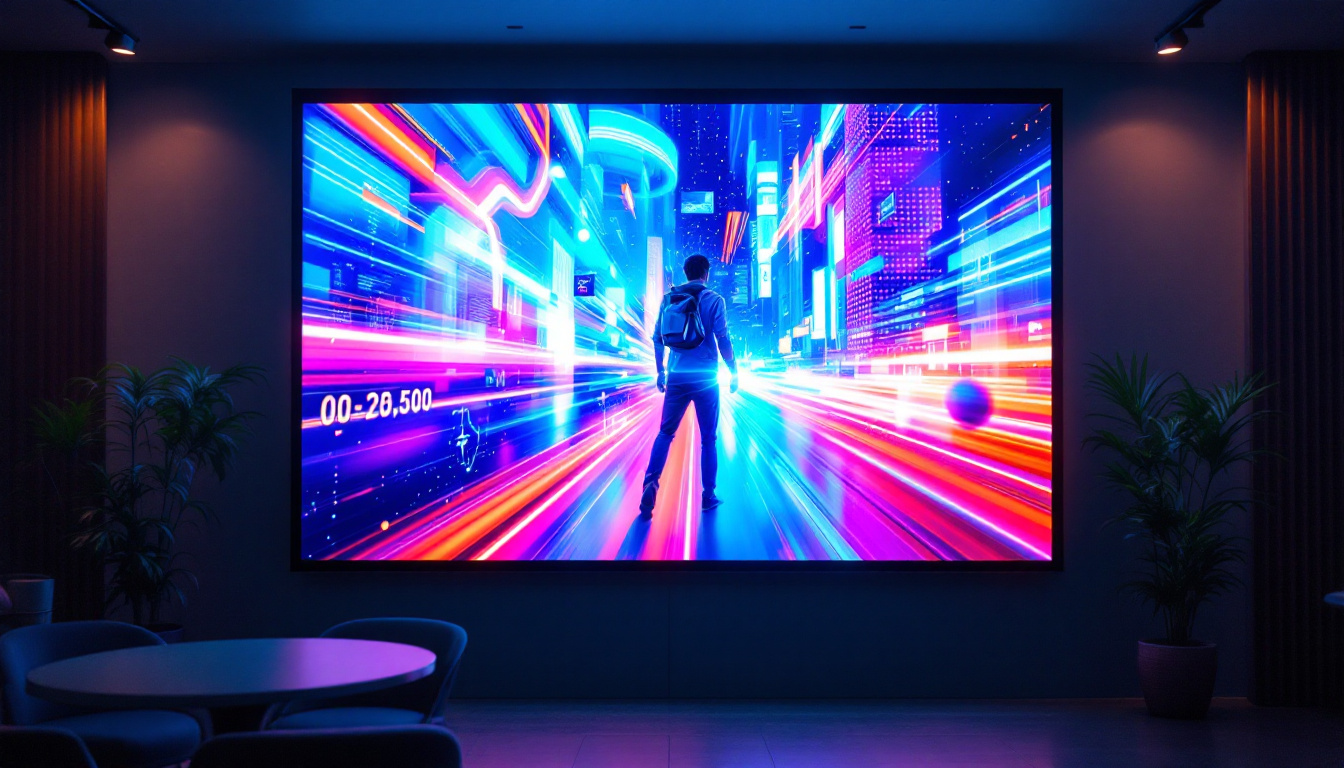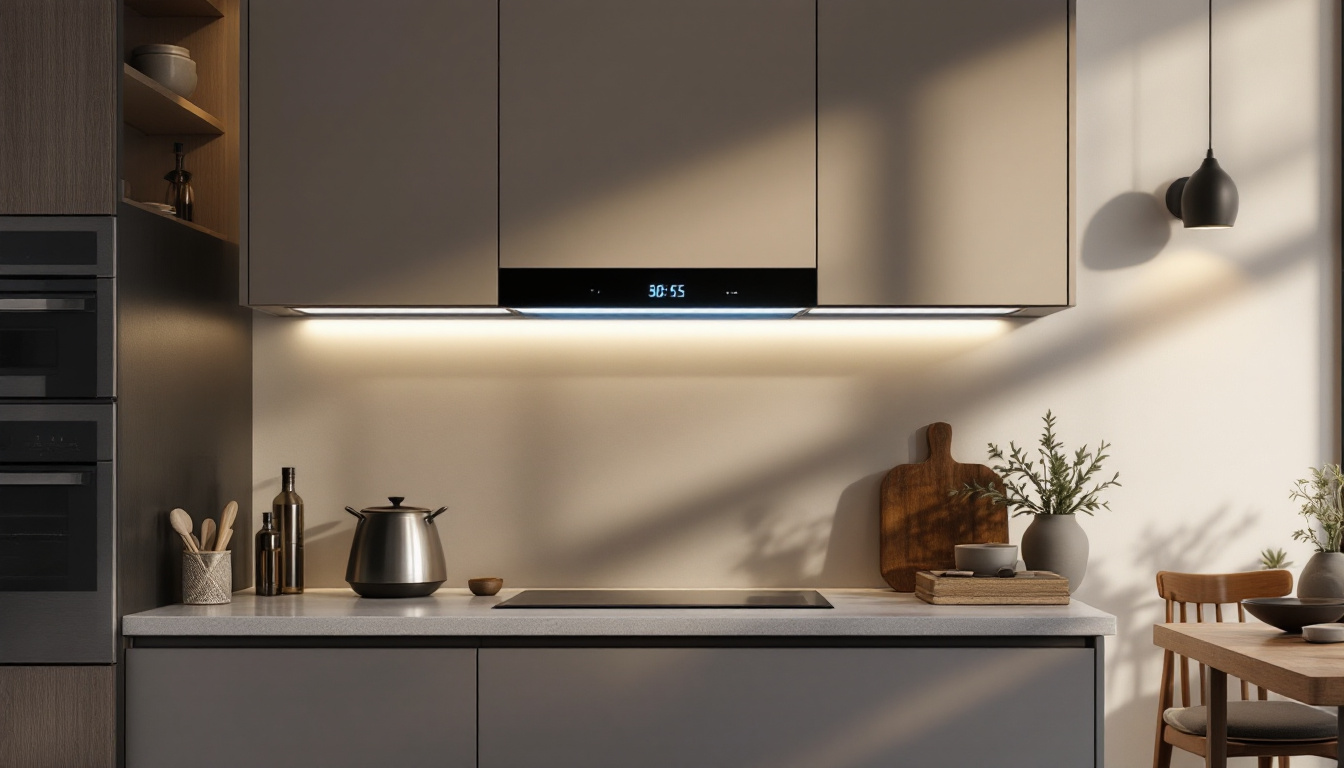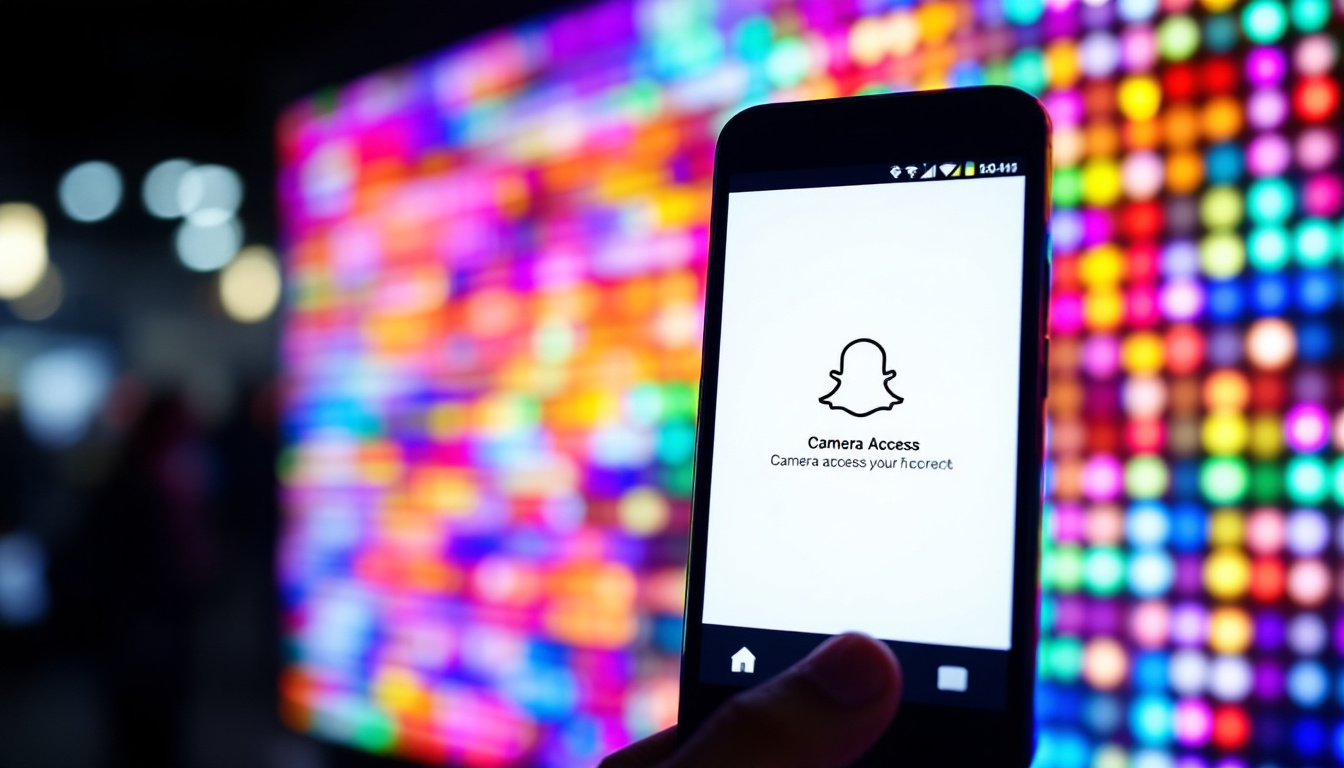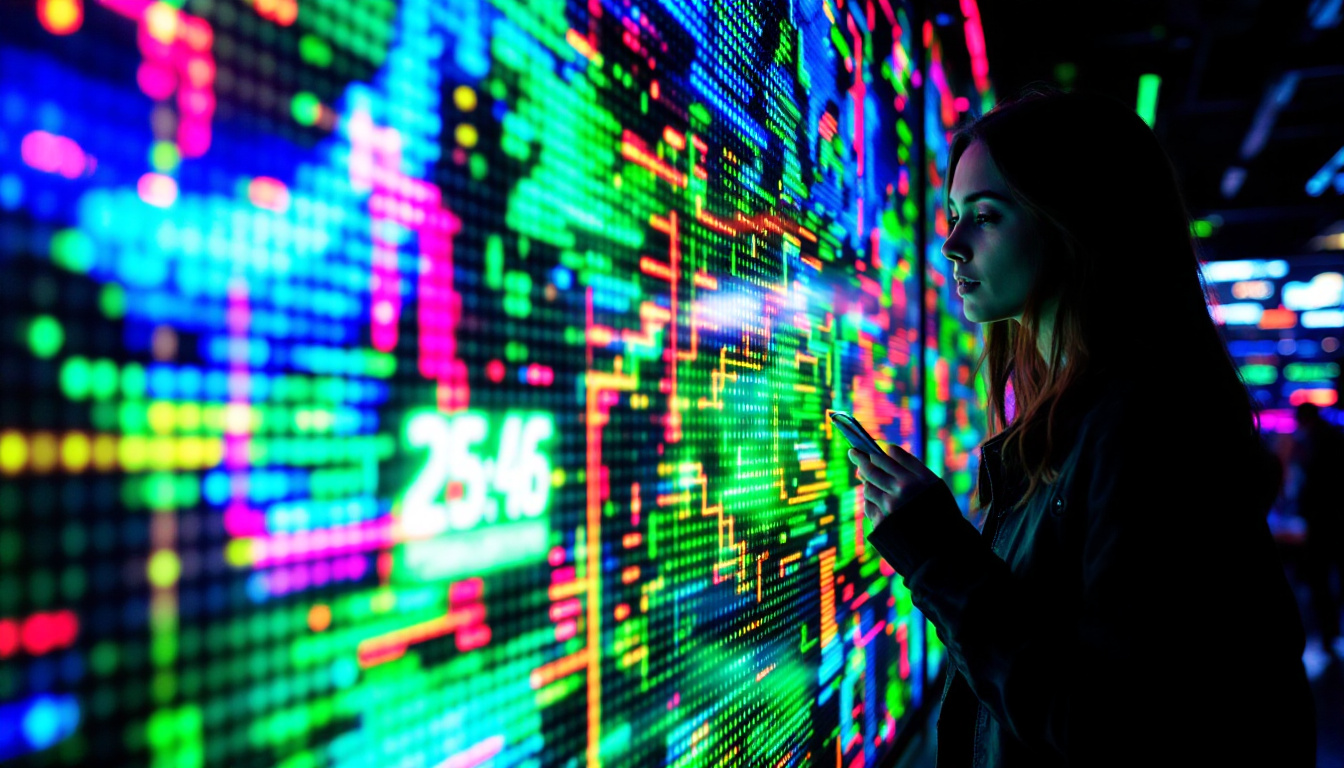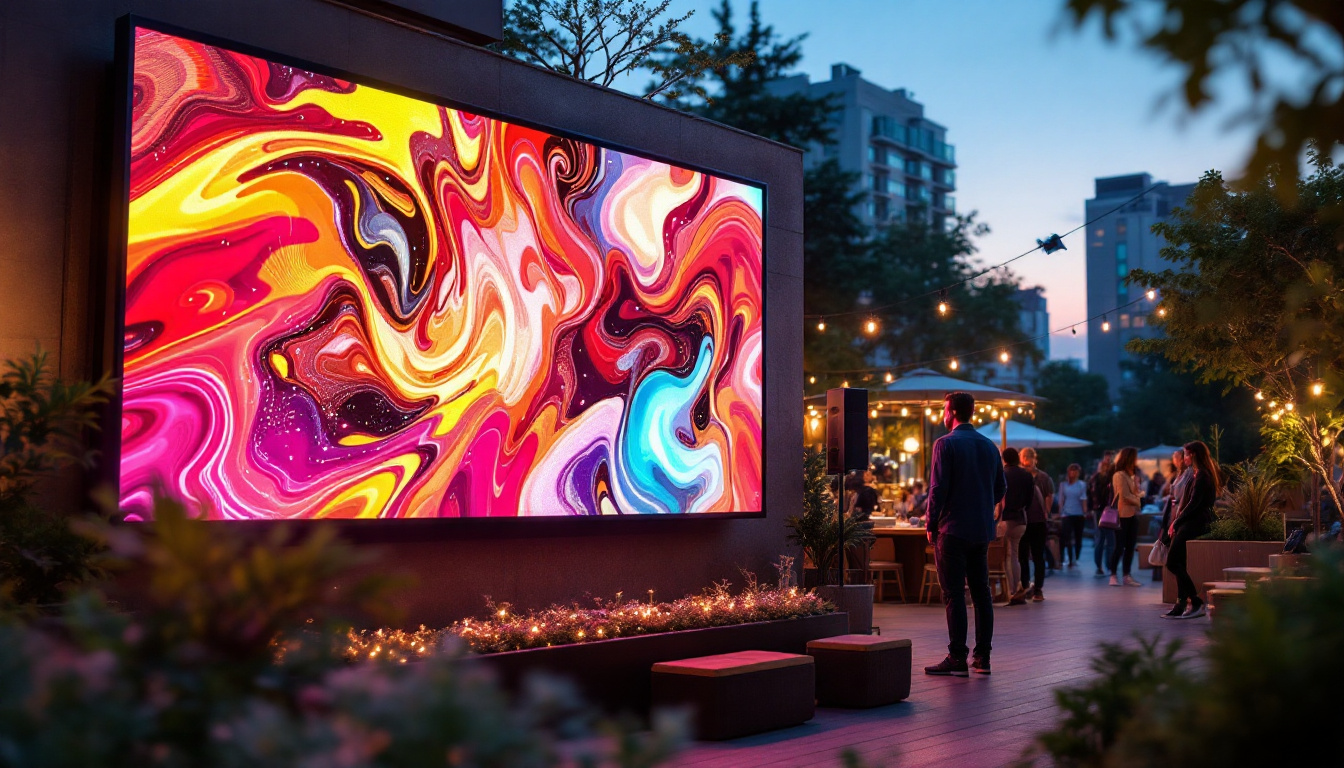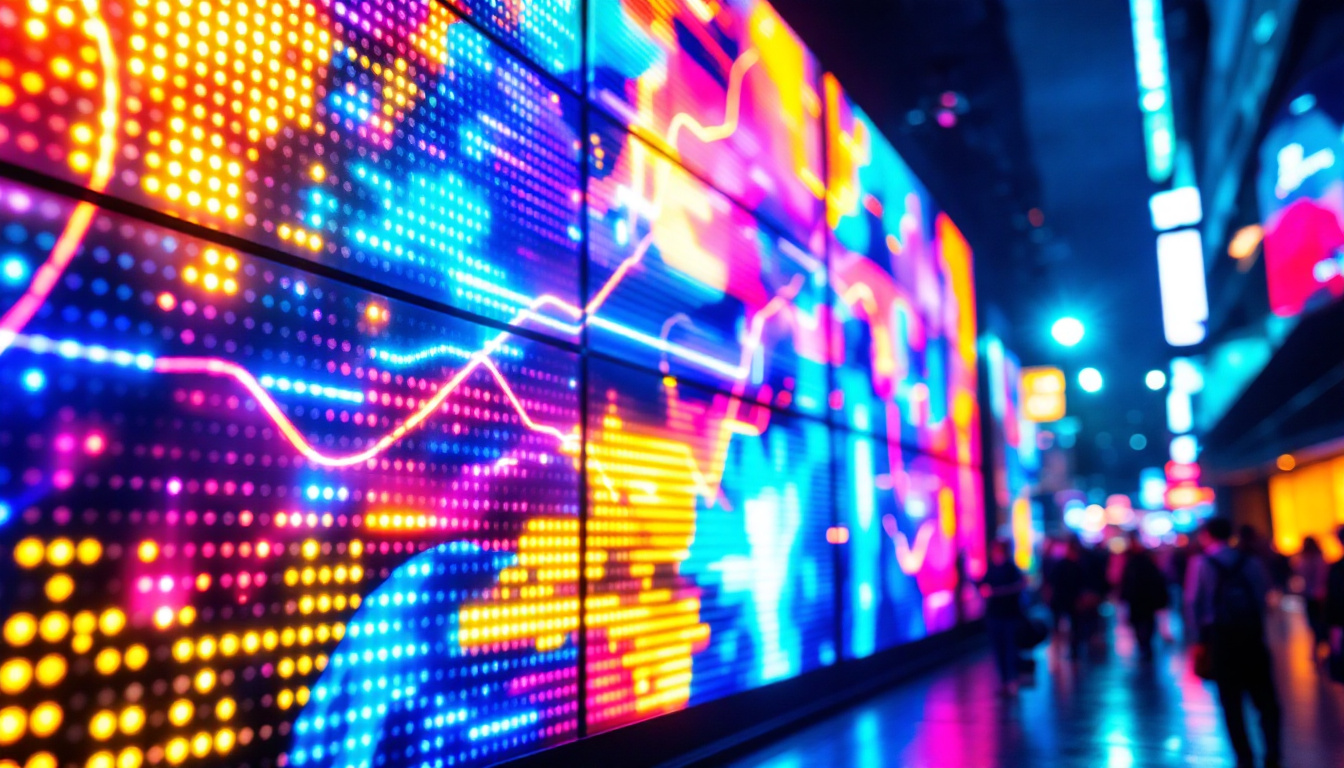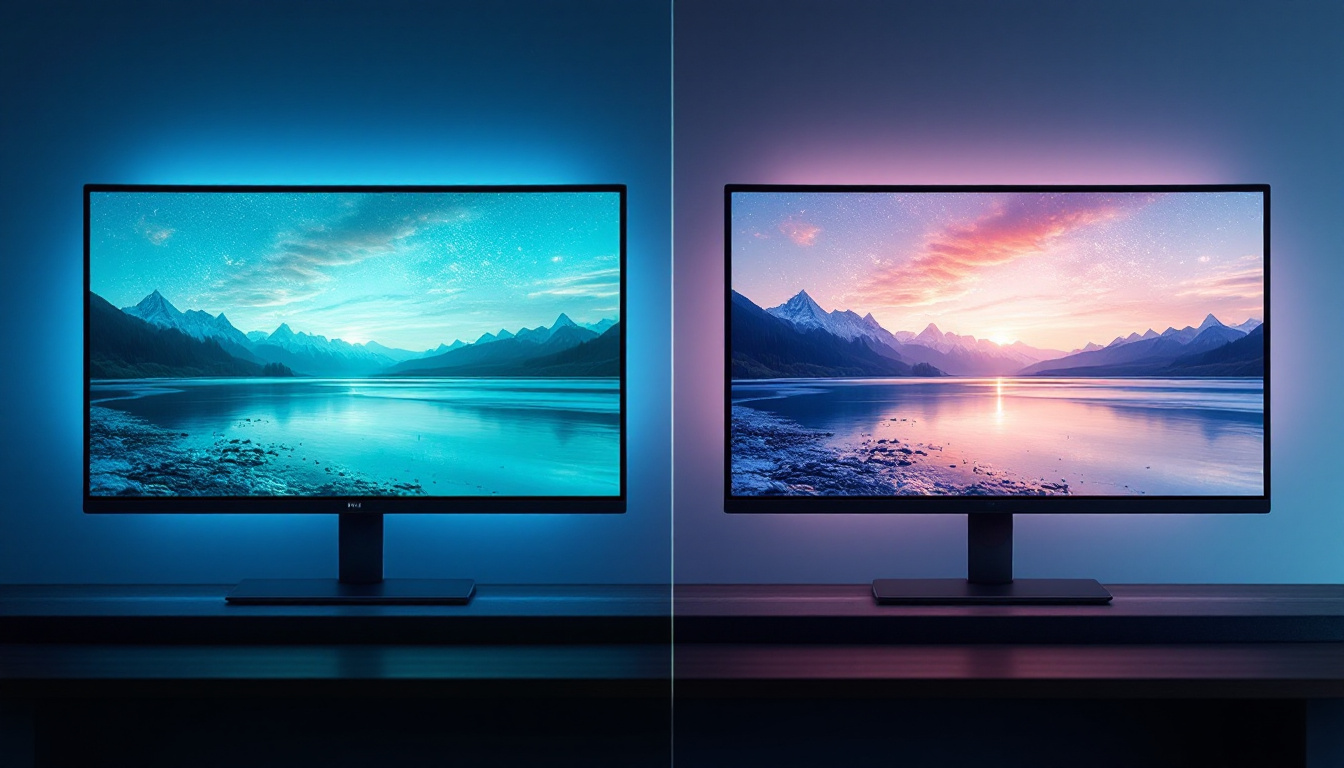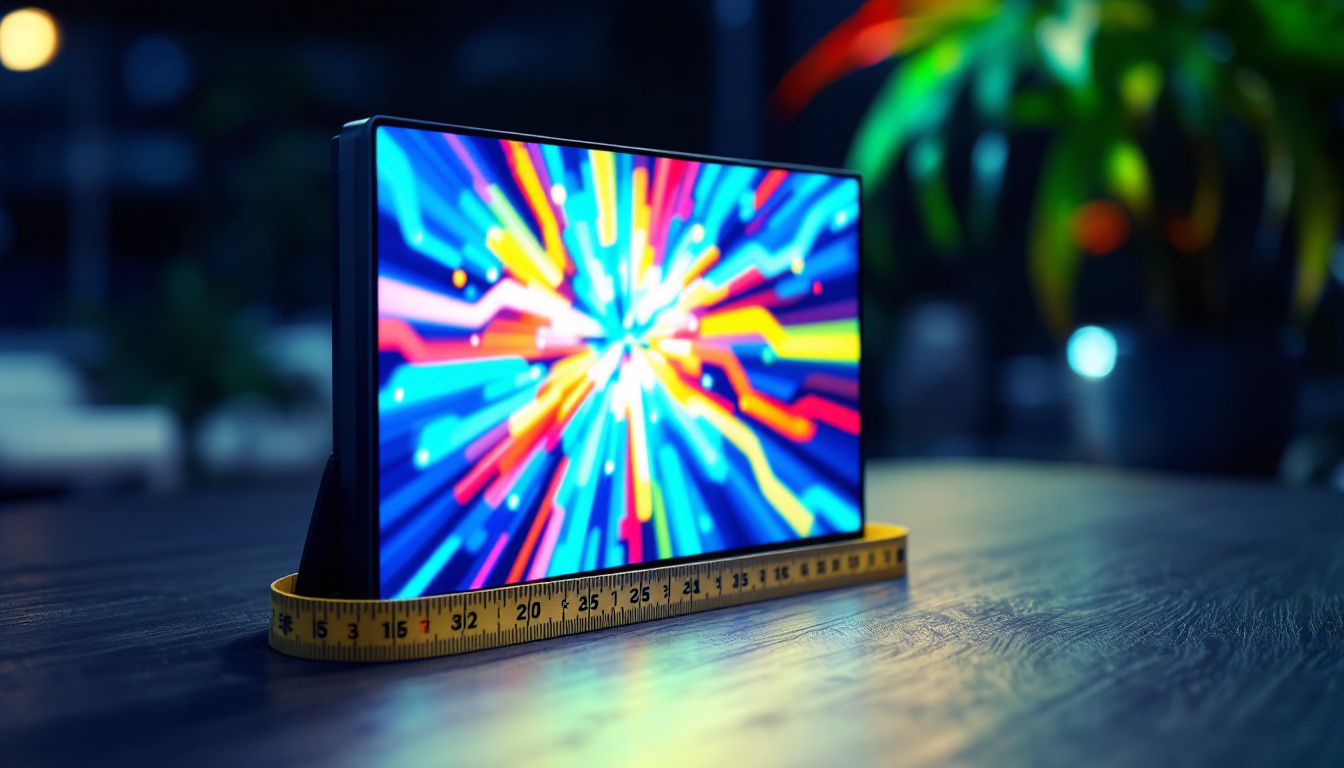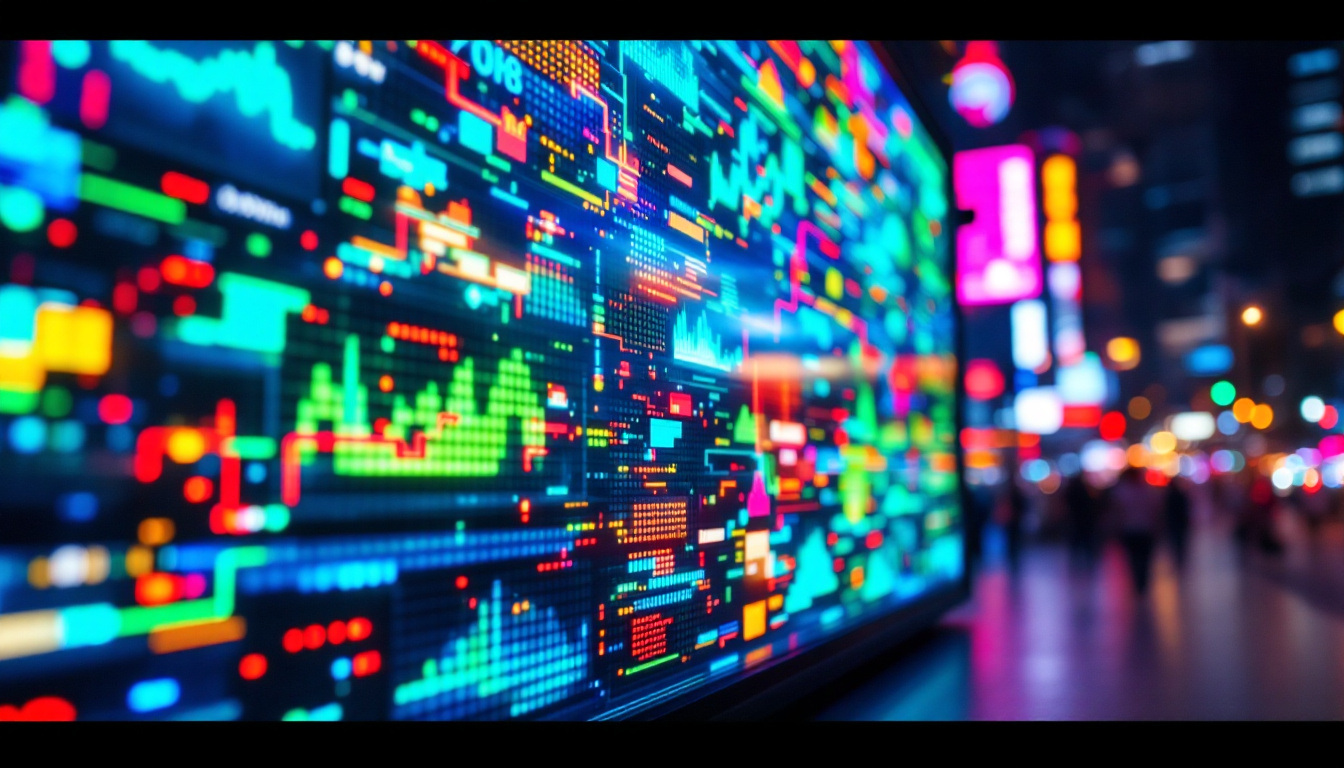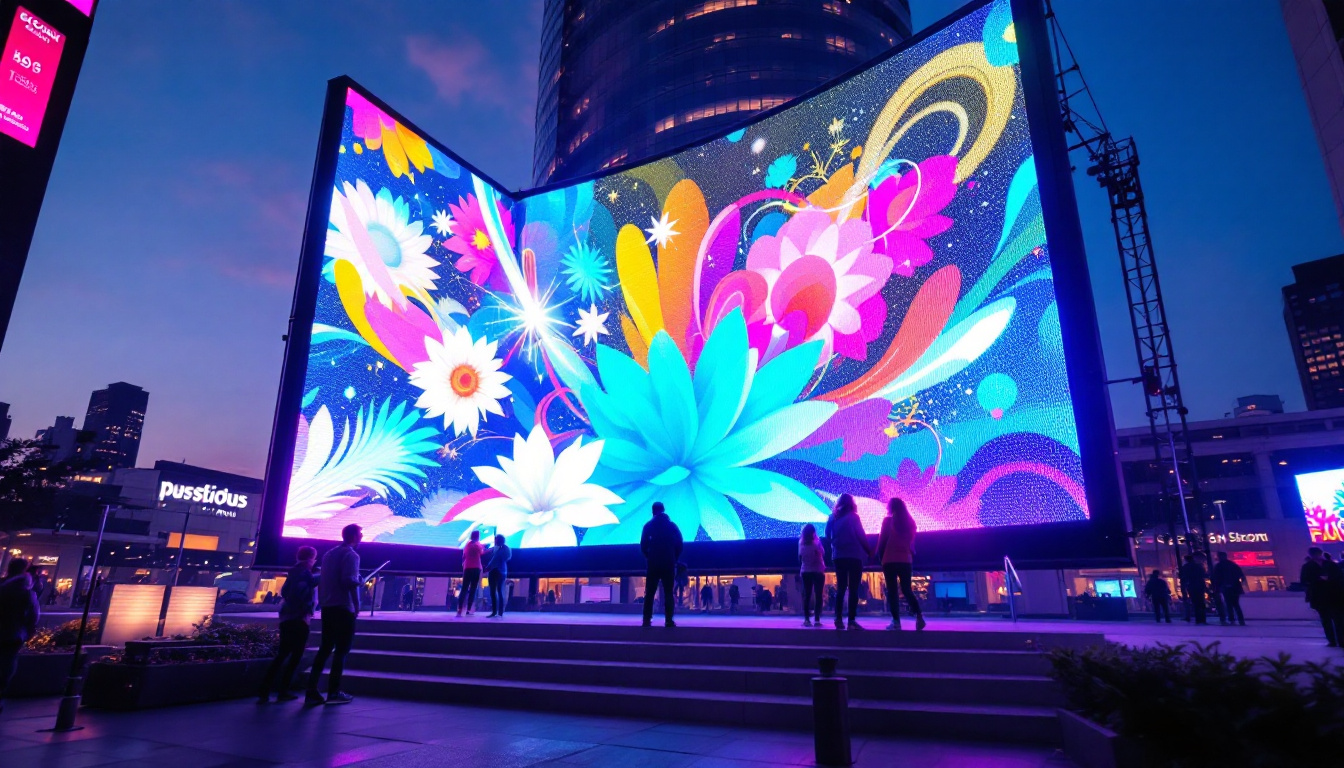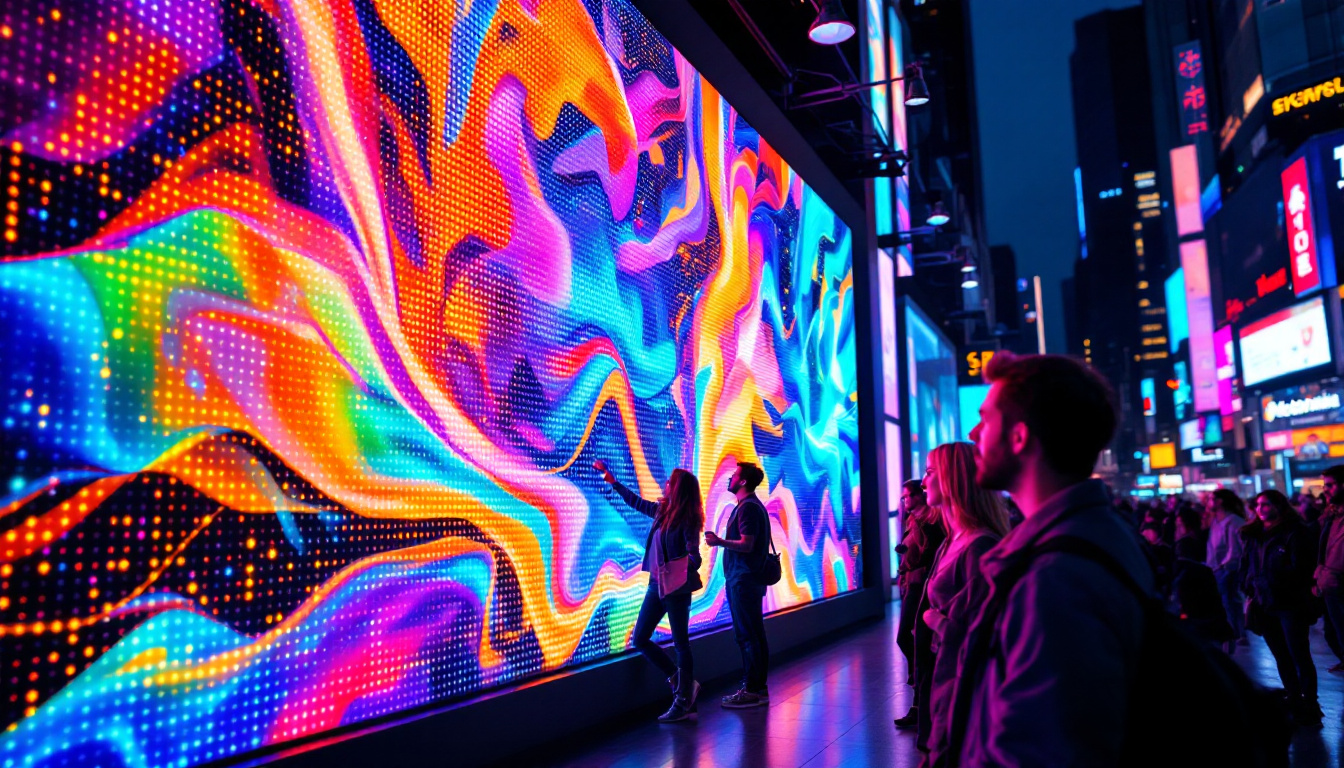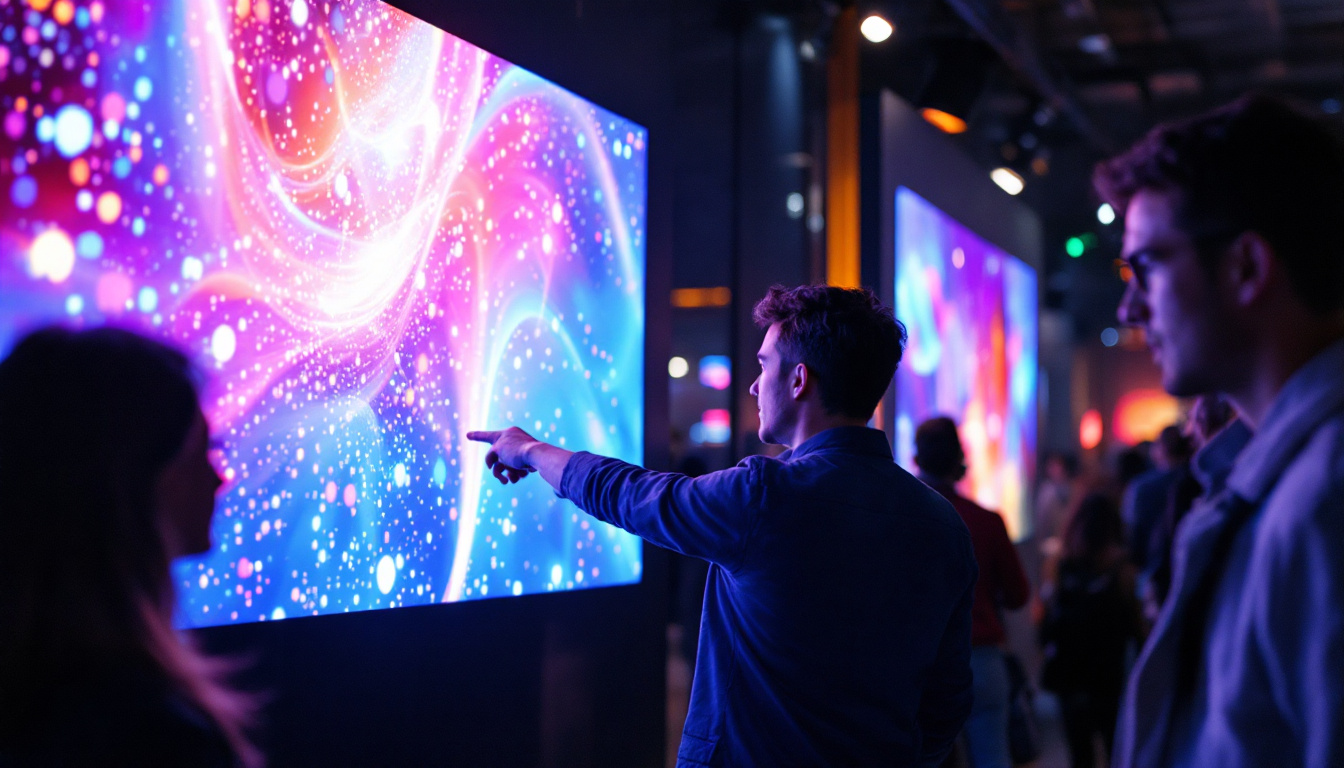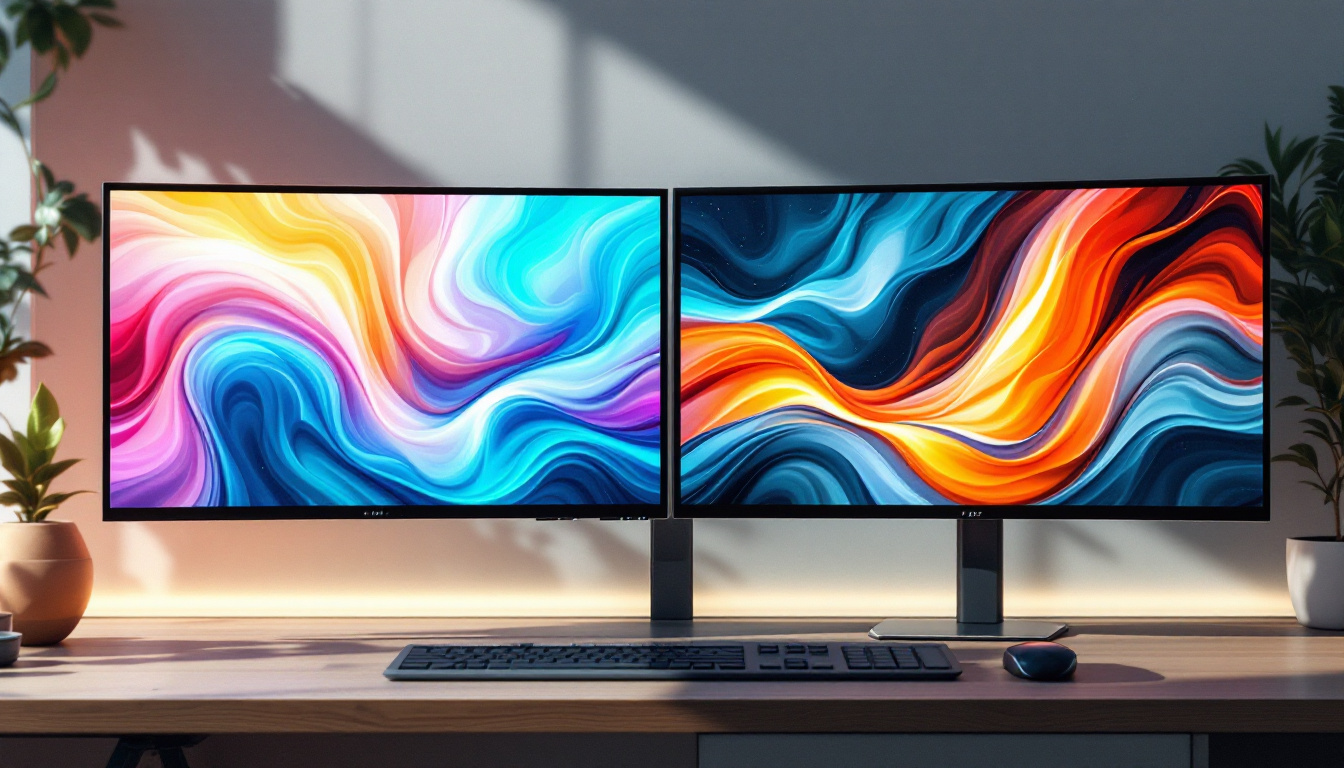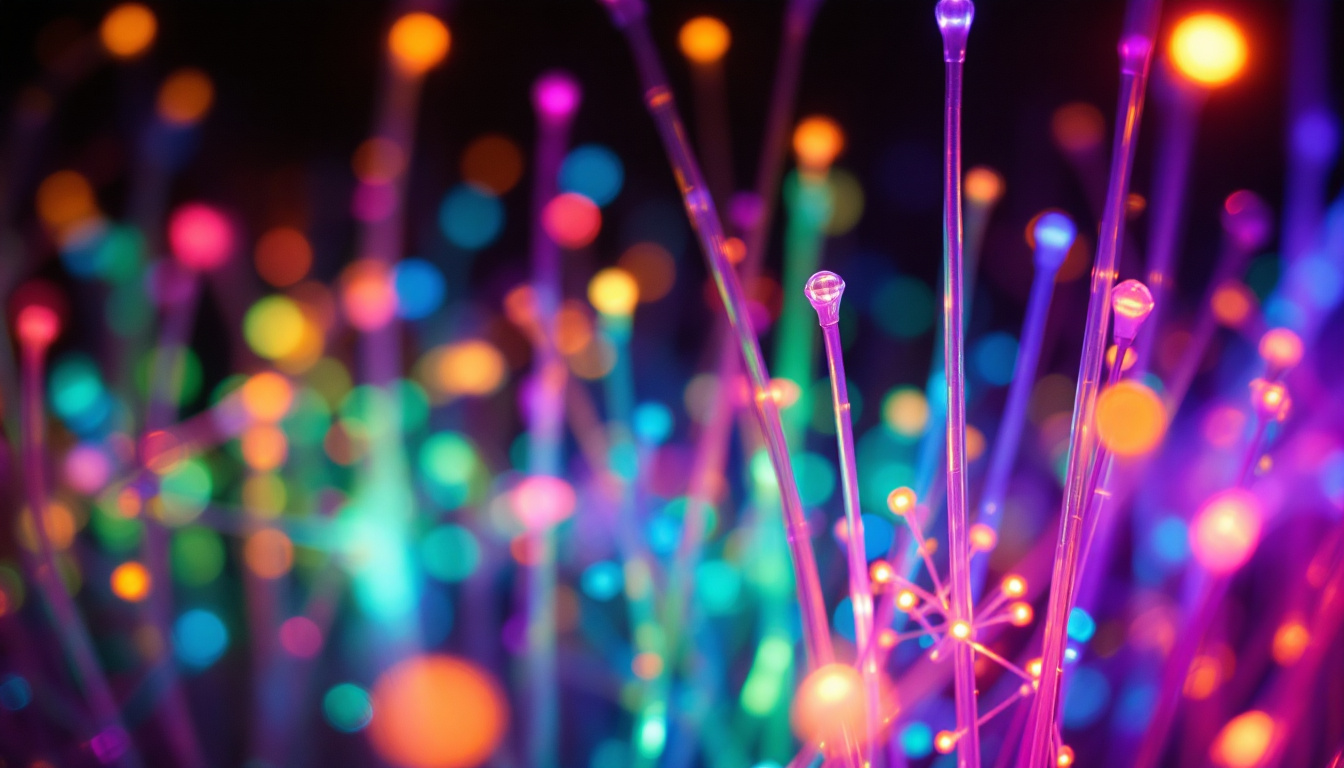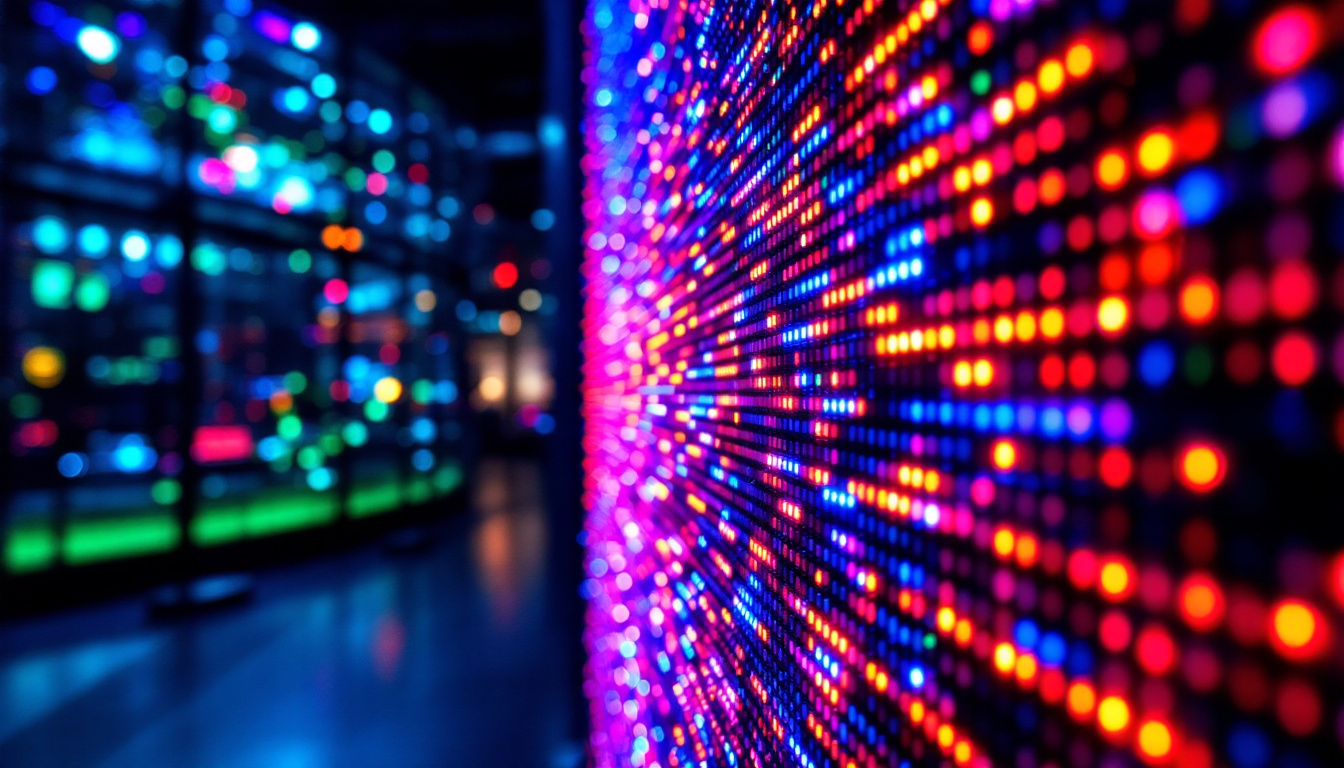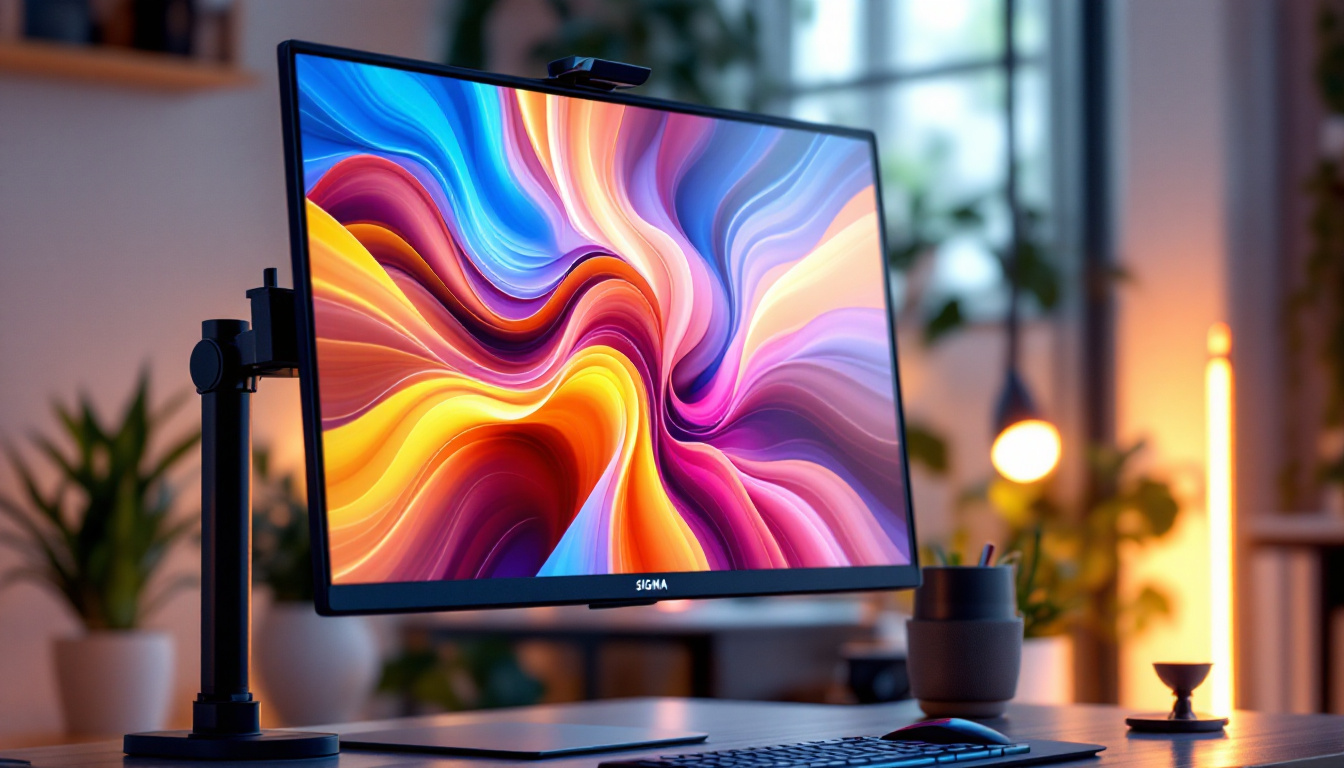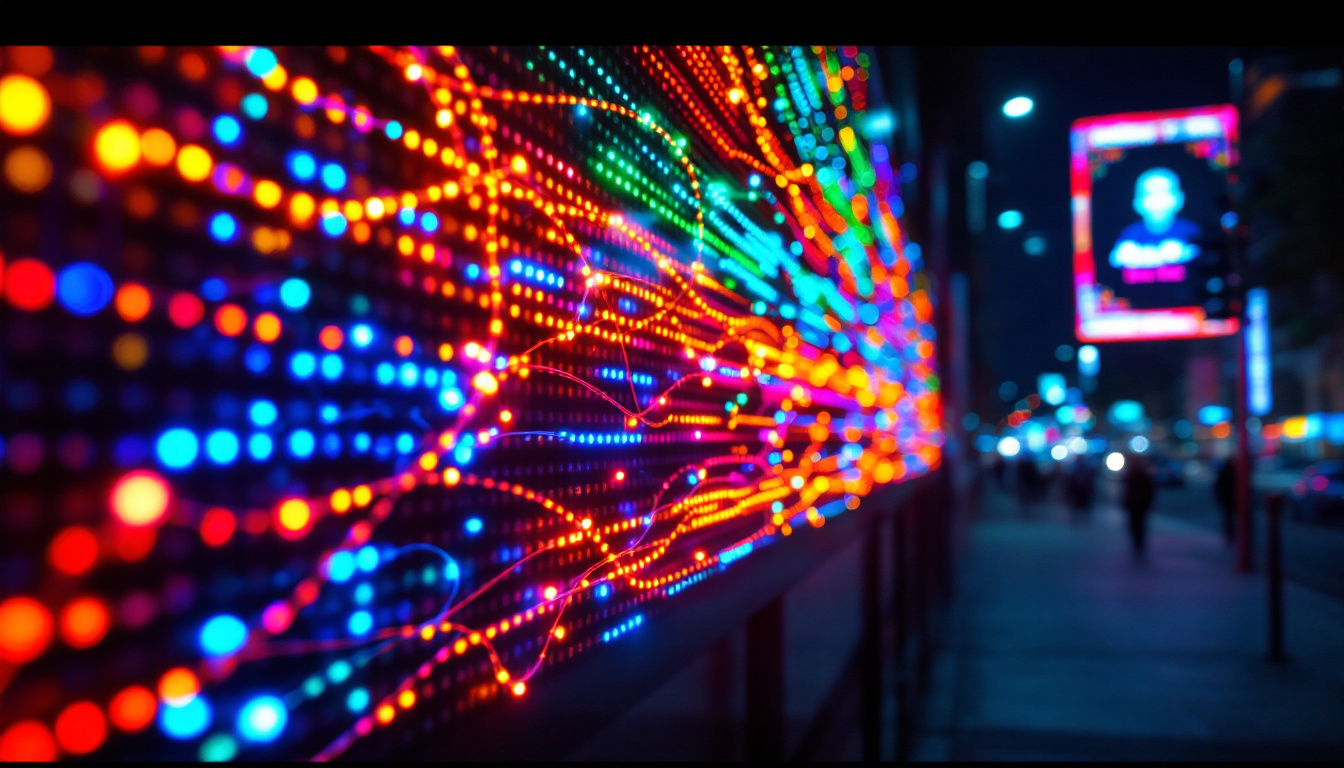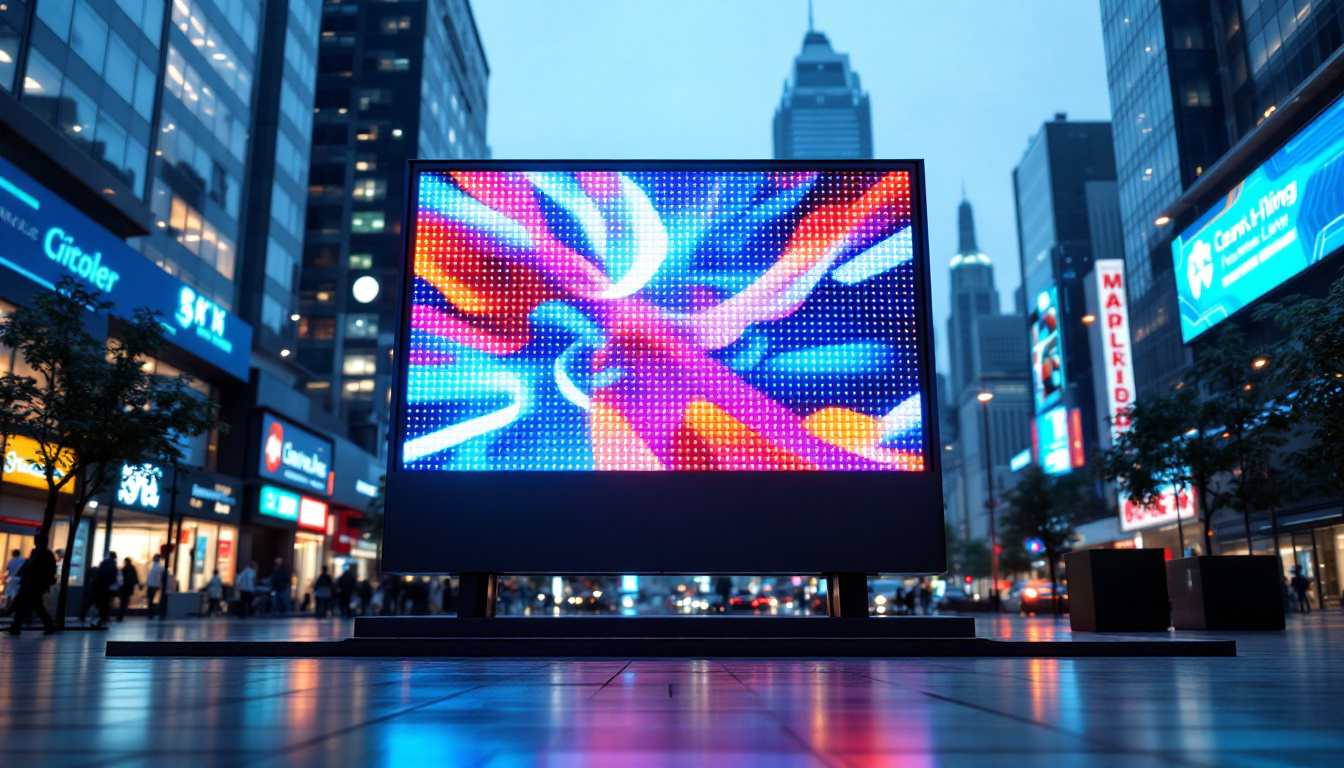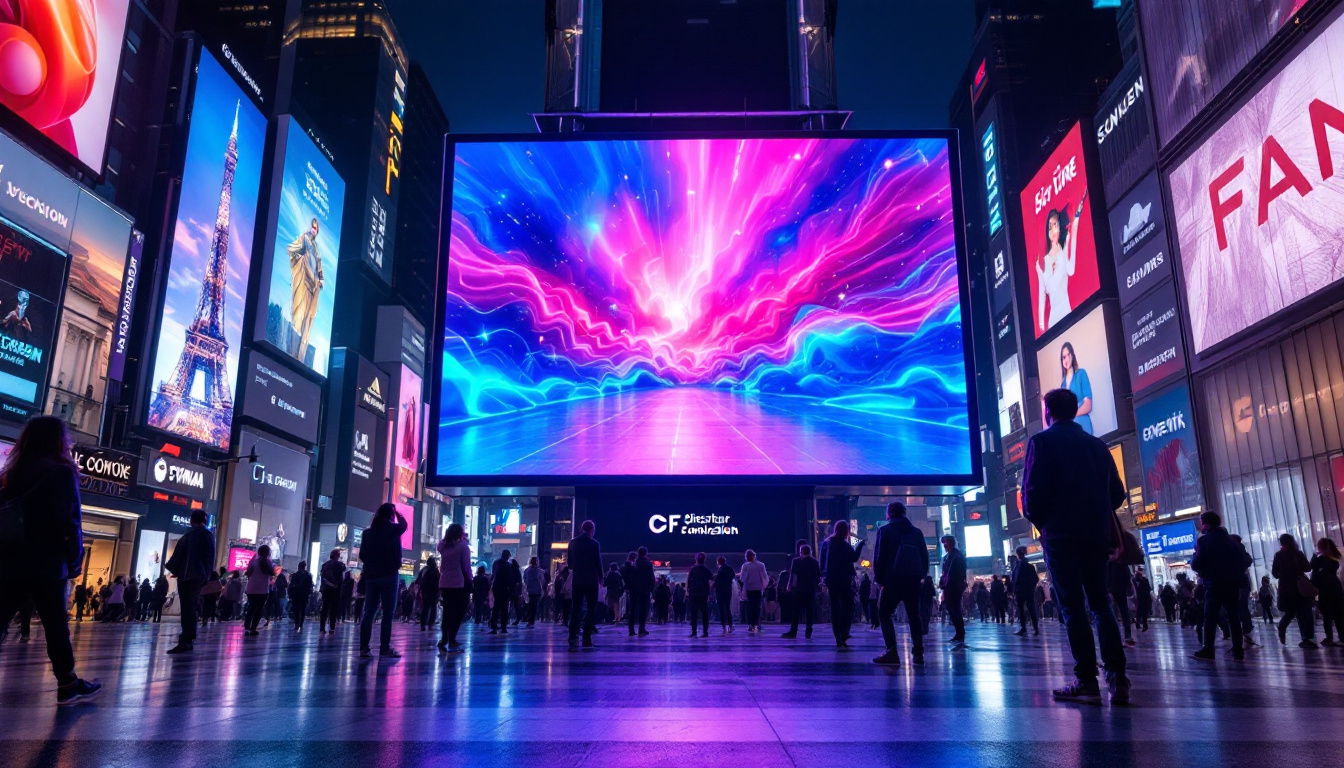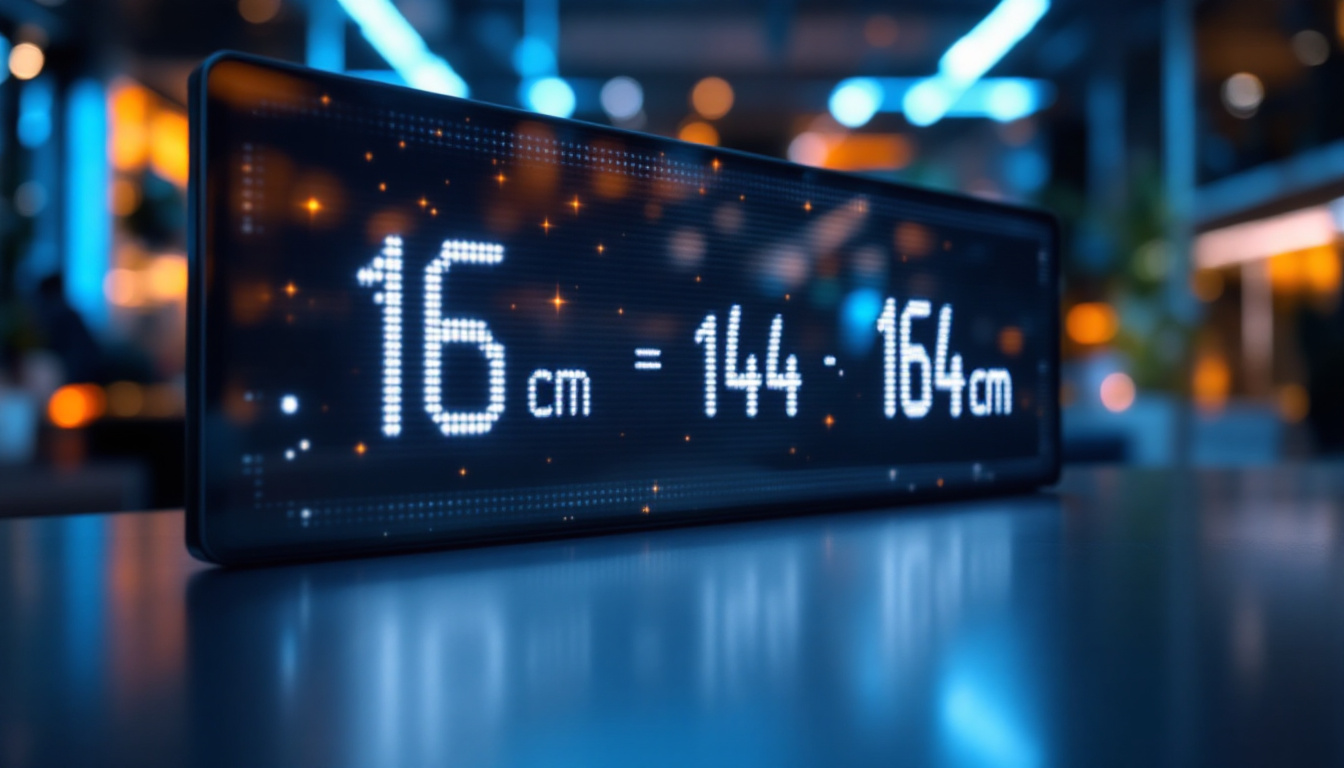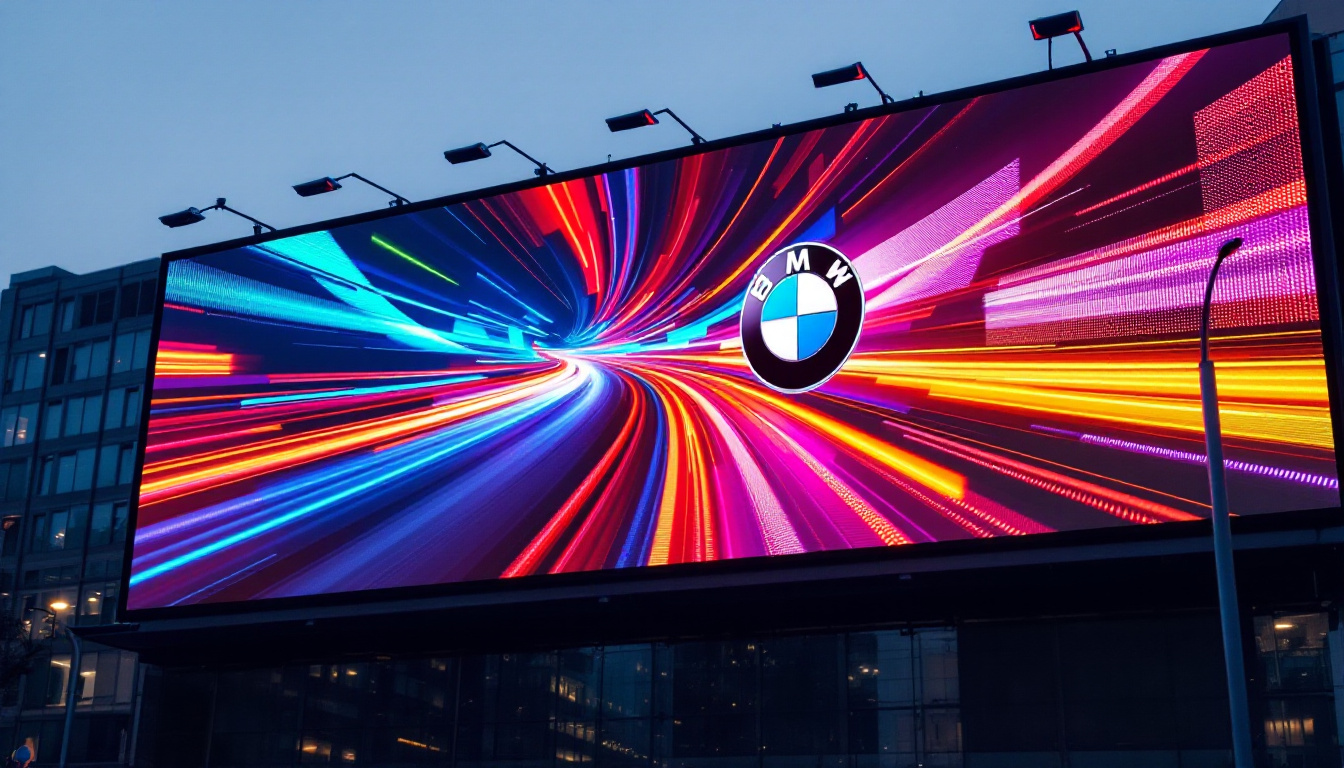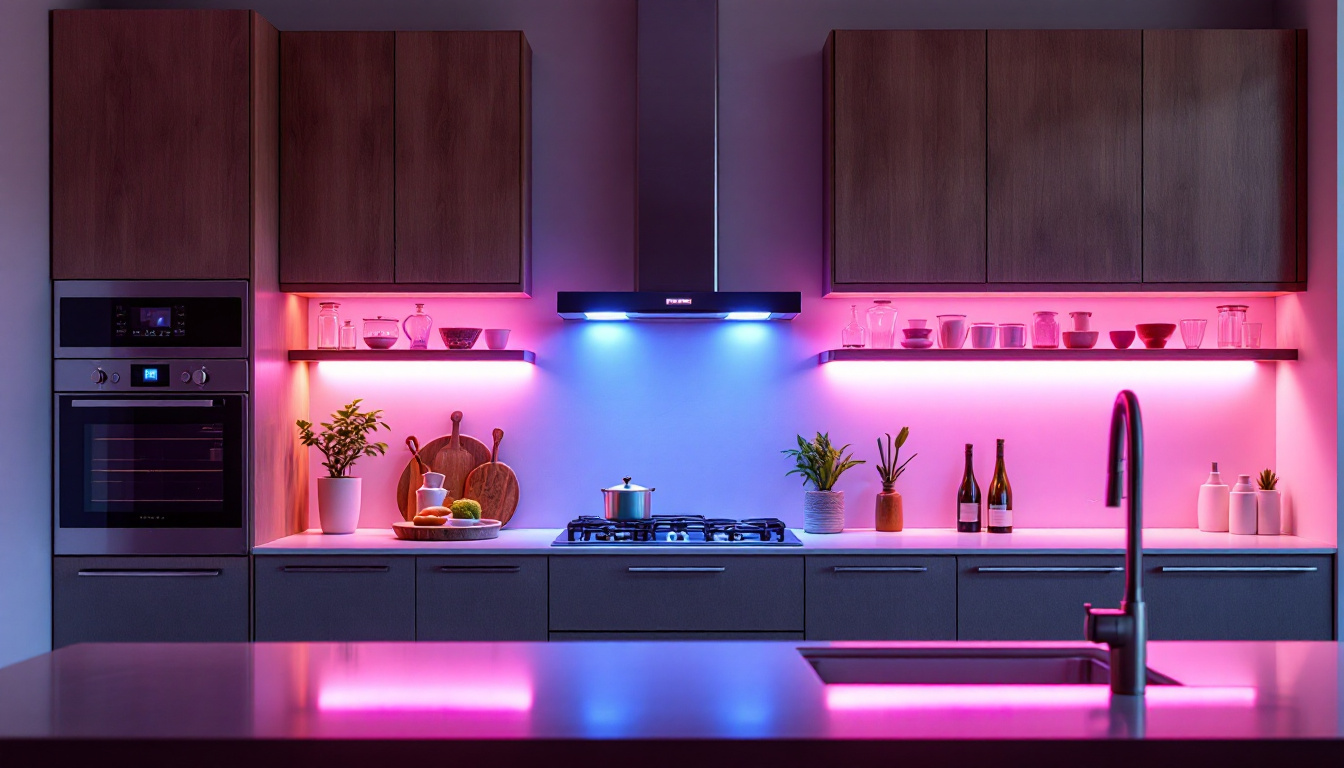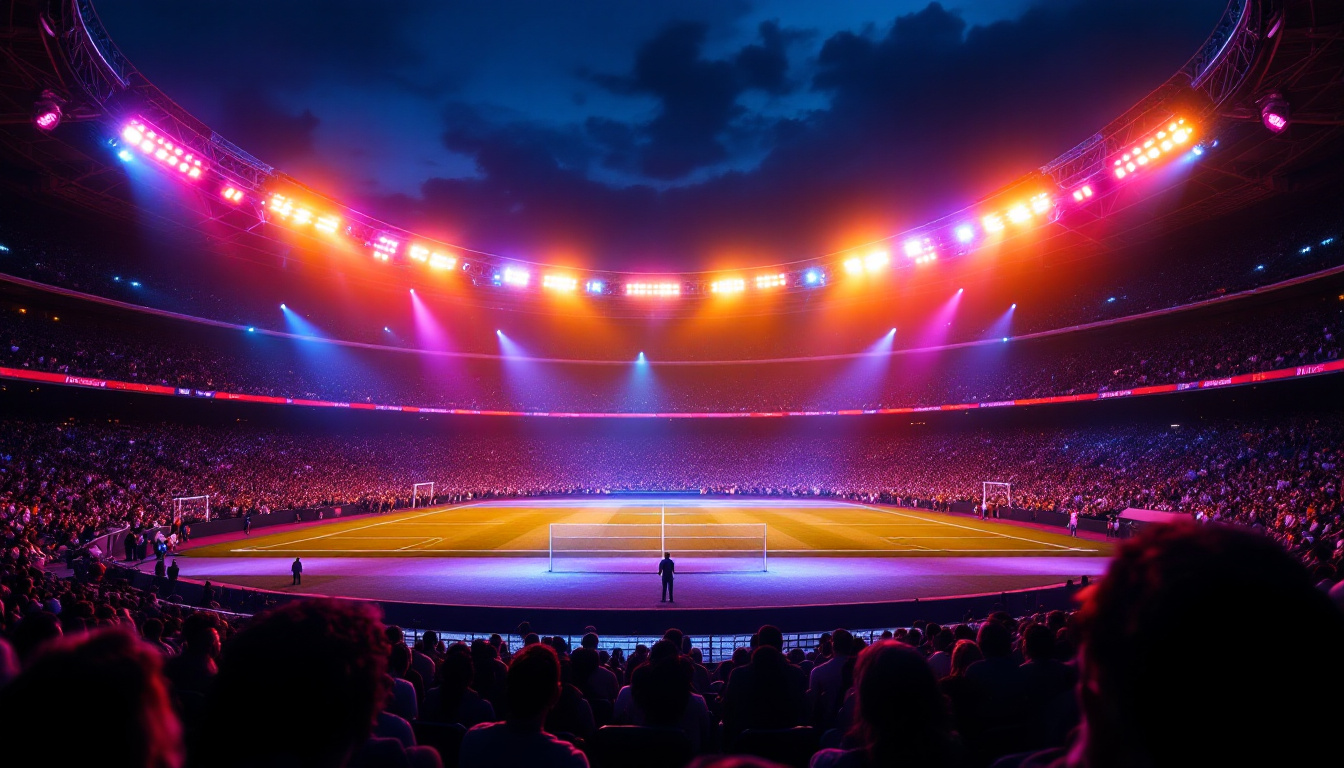In today’s fast-paced world, businesses are constantly seeking innovative ways to capture the attention of their target audience. One of the most effective tools in this endeavor is the indoor advertising LED display screen. These vibrant and dynamic displays have revolutionized the way brands communicate with consumers, offering a visually striking and engaging medium for advertising. This article delves into the intricacies of LED displays, their benefits, applications, and the technology behind them.
Understanding LED Display Technology
LED, or Light Emitting Diode, technology has transformed the landscape of visual advertising. Unlike traditional display methods, LED screens utilize a series of small diodes that emit light when an electric current passes through them. This technology not only enhances brightness but also improves energy efficiency, making it a preferred choice for indoor advertising. The longevity of LED displays, often exceeding 50,000 hours, further solidifies their status as a cost-effective solution for businesses looking to maximize their advertising impact without frequent replacements.
How LED Displays Work
At the core of an LED display is a matrix of individual LEDs that can be controlled to emit various colors and brightness levels. Each pixel on the screen is made up of red, green, and blue (RGB) diodes, which combine to create a full spectrum of colors. When these pixels are activated in different combinations, they can produce stunning visuals that capture attention. This capability allows for intricate animations and vivid imagery that can evoke emotions and engage viewers in ways that static displays simply cannot achieve.
The control system of an LED display is equally important. It processes the input signals from various sources, such as computers or media players, and translates them into visual content. This allows for real-time updates, enabling businesses to display dynamic advertisements, promotional videos, or even live feeds. Moreover, advanced software solutions can facilitate remote management of content, ensuring that businesses can easily adapt their messaging to suit changing circumstances or target specific audiences at different times of the day.
Types of Indoor LED Displays
Indoor LED displays come in various forms, each tailored to specific advertising needs. The most common types include:
- Direct View LED Displays: These are large screens made up of individual LED modules, ideal for high-traffic areas where visibility is key. Their ability to deliver bright, clear images even in well-lit environments makes them a staple in shopping malls and airports.
- LED Video Walls: Composed of multiple smaller screens tiled together, video walls provide a larger-than-life experience, perfect for events or exhibitions. They can be configured in various shapes and sizes, allowing for creative installations that can transform any space into an immersive visual experience.
- LED Posters: Slim and lightweight, these displays are suitable for retail environments, allowing for easy placement and frequent content updates. Their sleek design enables businesses to integrate them seamlessly into their existing decor, enhancing the overall aesthetic while delivering impactful messaging.
In addition to these common types, there are also specialized LED displays designed for specific applications, such as transparent LED screens that allow for visibility through the display itself, making them ideal for storefronts. Furthermore, advancements in technology have led to the development of flexible LED displays, which can be bent or curved to fit unique spaces, offering even more versatility for creative advertising solutions. As the demand for eye-catching and interactive advertising continues to grow, the evolution of LED display technology is poised to keep pace with the ever-changing landscape of marketing and consumer engagement.
The Advantages of Indoor LED Displays
Indoor LED displays offer numerous advantages over traditional advertising methods, making them a popular choice among businesses. Here are some key benefits:
High Visibility and Impact
One of the most significant advantages of LED displays is their brightness. Unlike conventional screens, LED technology ensures that advertisements remain visible even in well-lit environments. This high visibility translates to increased engagement, as passersby are more likely to notice and interact with vibrant, eye-catching content.
Energy Efficiency and Longevity
LED displays are known for their energy efficiency. They consume significantly less power than traditional display technologies, which not only reduces operational costs but also contributes to a more sustainable business model. Moreover, LED screens have a longer lifespan, often exceeding 100,000 hours, which means fewer replacements and lower maintenance costs.
Flexibility and Versatility
With the ability to display a wide range of content—from static images to dynamic videos—LED displays offer unparalleled versatility. This flexibility allows businesses to tailor their advertising messages to specific audiences and occasions, ensuring that content remains relevant and engaging.
Applications of Indoor LED Displays
The versatility of indoor LED displays has led to their adoption across various industries. Here are some notable applications:
Retail Environments
In retail settings, LED displays serve as powerful tools for promoting products and enhancing the shopping experience. They can showcase advertisements, highlight special offers, or provide information about new arrivals. By strategically placing these displays near high-traffic areas, retailers can significantly boost customer engagement and drive sales.
Corporate Settings
Many corporations utilize LED displays for internal communications and branding. These screens can be used in lobbies, conference rooms, or break areas to share important announcements, display company achievements, or even showcase employee recognition. This not only fosters a sense of community but also reinforces brand identity.
Events and Exhibitions
During events and exhibitions, LED displays play a crucial role in attracting attendees and conveying information. Whether it’s a product launch, trade show, or conference, these screens can be used to display schedules, highlight speakers, or showcase promotional videos. Their ability to create an immersive experience makes them invaluable in such settings.
Choosing the Right Indoor LED Display
When selecting an indoor LED display, several factors should be considered to ensure the right fit for specific needs.
Resolution and Pixel Pitch
The resolution of an LED display is determined by its pixel pitch, which refers to the distance between individual pixels. A smaller pixel pitch results in higher resolution and sharper images, making it ideal for close viewing distances. For applications where viewers are farther away, a larger pixel pitch may suffice, offering a balance between cost and visual quality.
Size and Configuration
Determining the appropriate size and configuration of an LED display is crucial. Consider the viewing distance, the space available, and the intended use. For larger venues or events, a video wall configuration may be more effective, while smaller displays might be suitable for retail environments.
Content Management System
A robust content management system (CMS) is essential for effectively managing and updating the content displayed on LED screens. Look for systems that offer user-friendly interfaces, real-time updates, and compatibility with various media formats. This will ensure that businesses can easily adapt their messaging as needed.
Installation and Maintenance of LED Displays
Proper installation and maintenance are vital for the longevity and performance of indoor LED displays. Here are some considerations:
Professional Installation
While some businesses may consider DIY installation, it is advisable to hire professionals for optimal results. Experienced technicians can ensure that the display is correctly mounted, calibrated, and integrated with existing systems. This minimizes the risk of technical issues and maximizes the display’s effectiveness.
Regular Maintenance
Routine maintenance is essential to keep LED displays in peak condition. This includes cleaning the screen, checking connections, and updating software. Regular inspections can help identify potential issues before they escalate, ensuring that the display remains operational and effective.
Upgrades and Technology Trends
As technology continues to evolve, businesses should stay informed about the latest trends in LED displays. Upgrading to newer models with improved features, such as higher resolution or enhanced connectivity options, can provide a competitive advantage. Keeping abreast of technological advancements ensures that businesses can leverage the full potential of their advertising displays.
The Future of Indoor LED Displays
The future of indoor LED displays looks promising, with continuous advancements in technology paving the way for even more innovative applications. Here are some trends to watch:
Integration with Augmented Reality (AR)
As augmented reality technology becomes more mainstream, the integration of AR with LED displays is on the horizon. This combination could create immersive advertising experiences, allowing consumers to interact with products in a virtual space. Imagine walking into a store and seeing an LED display that overlays additional information or animations related to the products on display.
Smart Displays and IoT Integration
The Internet of Things (IoT) is set to revolutionize the way LED displays operate. Smart displays that can connect to the internet will allow for real-time data analysis, enabling businesses to tailor content based on audience behavior and preferences. This level of personalization can significantly enhance the effectiveness of advertising campaigns.
Eco-Friendly Innovations
As sustainability becomes a priority for many businesses, eco-friendly innovations in LED technology are emerging. Manufacturers are focusing on creating displays that use sustainable materials and consume less energy. This shift not only benefits the environment but also aligns with the values of eco-conscious consumers.
Conclusion
The indoor advertising LED display screen has become an essential tool for businesses looking to enhance their marketing strategies. With their high visibility, energy efficiency, and versatility, LED displays provide a powerful medium for engaging audiences and conveying messages effectively. As technology continues to evolve, the potential applications and benefits of LED displays will only expand, making them a vital component of modern advertising.
Investing in the right LED display solution can yield significant returns, driving customer engagement and ultimately boosting sales. By understanding the technology, applications, and future trends of indoor LED displays, businesses can position themselves for success in an increasingly competitive landscape.
Discover LumenMatrix’s Innovative LED Display Solutions
Ready to elevate your advertising strategy with high-impact visual displays? LumenMatrix is at the forefront of LED display technology, offering a diverse range of solutions tailored to meet your unique needs. From captivating Indoor LED Wall Displays to dynamic Outdoor LED Wall Displays, and from versatile Vehicle LED Displays to sleek LED Poster Displays, our products are designed to enhance brand visibility and create unforgettable visual experiences. Embrace the future of visual communication with LumenMatrix’s cutting-edge digital signage and LED display solutions. Check out LumenMatrix LED Display Solutions today and transform the way you connect with your audience.

